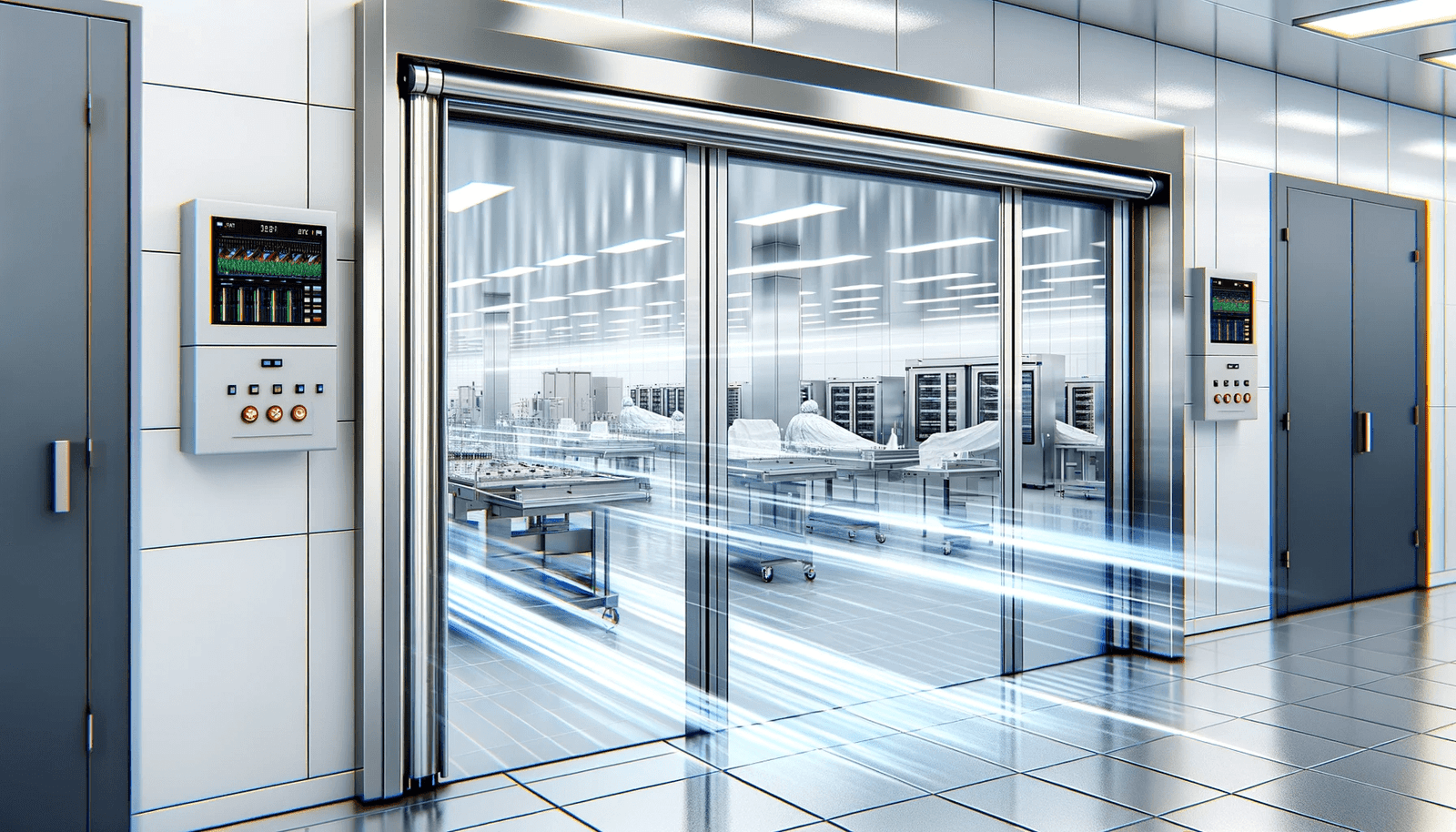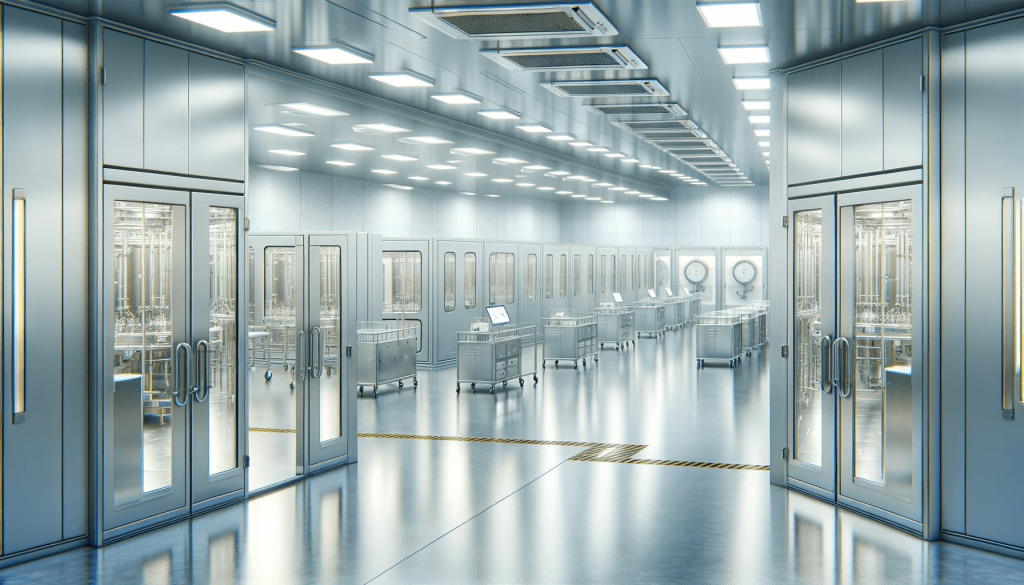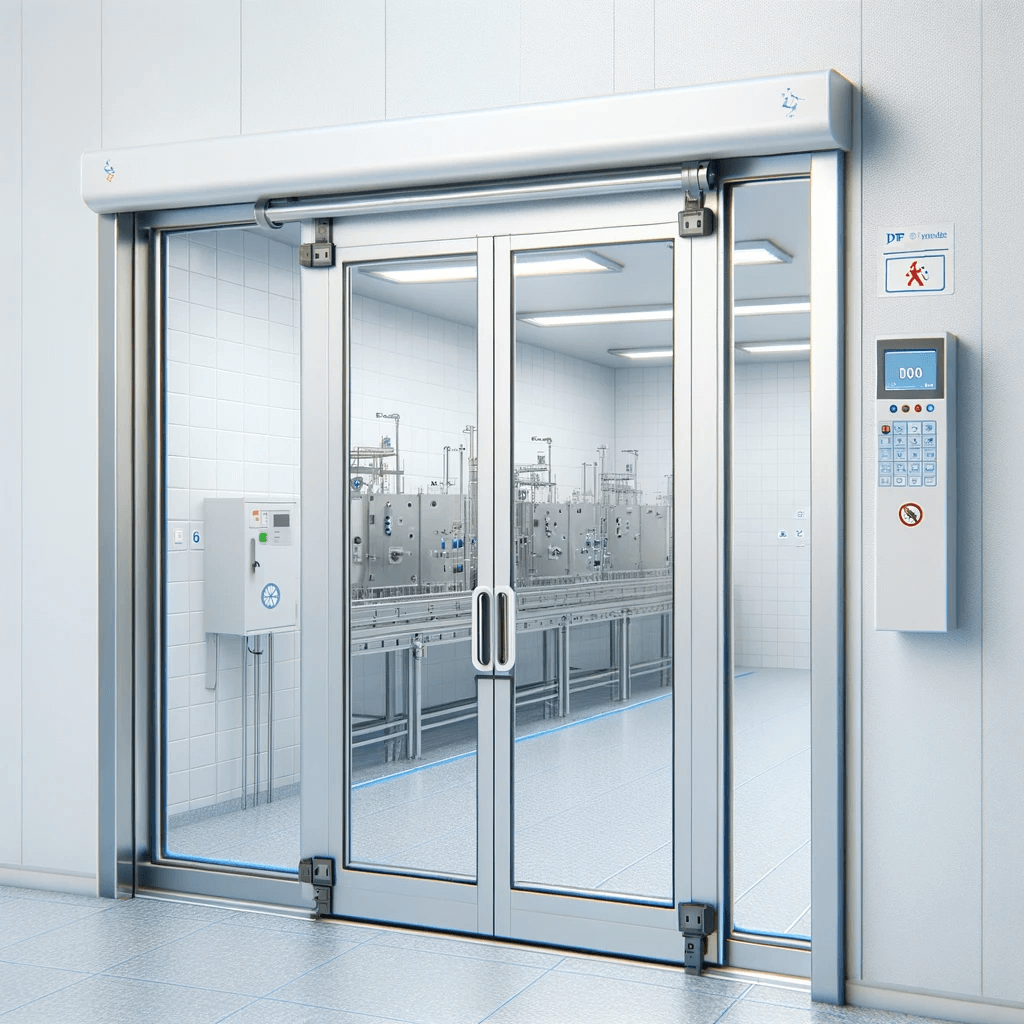
The selection of doors for cleanrooms is a critical component in ensuring the effectiveness of these controlled environments. Cleanrooms are used across various industries, including pharmaceuticals, biotech, semiconductors, and aerospace, where maintaining specific environmental conditions is essential for product quality and safety. This guide delves deep into the factors involved in selecting the right clean room door, considering the unique requirements of different industries and the latest technological advancements.

Understanding Cleanroom Requirements
Cleanrooms are classified based on the allowable number of particles per cubic meter, as defined by ISO standards. The classification ranges from ISO 1, the cleanest, to ISO 9, the least stringent. Each level has specific requirements for air filtration, pressure, temperature, and humidity, which directly impact the choice of doors.
Key Factors:
Air Tightness: Essential for maintaining differential pressure, which prevents external contamination and controls the internal environment.
Material Compatibility: Door materials must be resistant to corrosion and chemical exposure and should not shed particles or fibers.
Ease of Cleaning: Non-porous, smooth surfaces are essential to prevent microbial growth and facilitate the removal of contaminants.
Types of Cleanroom Doors
Cleanroom doors must align with the operational needs and environmental conditions of the facility.
Swing Doors
- Pros: Offer excellent sealing capabilities, essential for maintaining environmental control. Automated options reduce touchpoints, lowering contamination risk.
- Cons: Require space for the arc of the door, which might not be feasible in compact areas.
Sliding Doors
- Pros: Ideal for space-constrained environments. Automated sliding doors reduce manual handling, thus minimizing contamination.
- Cons: Their complex mechanisms may require more frequent maintenance.
High Speed Roll Up Doors
- Pros: They operate quickly, making them suitable for areas with high traffic. Their rapid opening and closing minimize air exchange.
- Cons: Generally more expensive and may offer less effective sealing compared to swing or sliding doors.

Material Selection
The selection of material for cleanroom doors is pivotal in meeting cleanliness and durability requirements.
Common Materials:
Stainless Steel: Offers excellent durability and resistance to a wide range of chemicals. Its non-porous surface makes it ideal for stringent cleanroom environments.
Aluminum: A lighter alternative to stainless steel, it offers good corrosion resistance and is more cost-effective.
Polymer-based Materials: These materials are beneficial in environments with specific chemical exposure. They offer excellent resistance and reduce particulate generation.
Design and Features
The design of cleanroom doors should encompass several features to enhance functionality and compliance.
Window Panels: Critical for visibility within the cleanroom. They should be constructed from durable, non-shattering materials like polycarbonate.
Interlocking System: Essential in preventing simultaneous opening of multiple doors, thereby maintaining the cleanroom’s pressure and contamination control.
Automation: Automated doors limit physical contact, reducing the risk of contamination. They also aid in maintaining consistent opening and closing speeds.
Seals and Gaskets: These are crucial in ensuring the door is airtight, which is essential for maintaining the internal environment of the cleanroom.
Compliance and Certification
Selecting doors that meet industry-specific standards is crucial. This includes adherence to ISO cleanroom standards, as well as other regulatory requirements, depending on the industry.
Installation and Maintenance
Proper installation by experienced professionals is essential. Regular maintenance ensures the door functions effectively, maintaining its seal and operational integrity.
Cost Considerations
Evaluate the total cost, including installation, maintenance, and potential energy savings. Higher upfront costs might be offset by long-term savings and reliability.
Advanced Considerations in Cleanroom Door Selection
Technological advancements have led to the development of doors with enhanced features, such as improved air seals, integrated access control systems, and materials offering better resistance to chemicals and wear.
Industry-Specific Requirements
Different industries have distinct requirements. For instance, pharmaceutical cleanrooms require doors with ultra-smooth surfaces for easy cleaning and disinfection, while semiconductor cleanrooms might need doors with EMI shielding.
Supplier Selection
The choice of supplier is as important as the door itself. Look for suppliers with a proven track record, comprehensive service offerings, and the ability to provide customized solutions.
Future Trends in Cleanroom Door Technology
Emerging trends include the integration of smart technology for real-time monitoring and control, sustainable materials, and designs focused on energy efficiency and enhanced safety.

High Speed Roll Up Doors in Cleanroom Applications
Overview of High Speed Roll Up Doors
High-speed roll-up doors, a specialized type of cleanroom roll up door, are designed for environments where speed, safety, and contamination control are paramount. They are particularly useful in cleanrooms that experience high traffic flow or require rapid access to different areas.
Features and Benefits
Rapid Operation: High-speed roll-up doors open and close quickly, typically within seconds. This fast action minimizes the time that the cleanroom is exposed to external environments, thereby reducing the risk of contamination.
Enhanced Airflow Control: Their quick operation is vital in maintaining the internal air pressure and cleanliness levels. By reducing the amount of time the door is open, these doors help in sustaining the required differential pressure within the cleanroom.
Energy Efficiency: Due to their swift operation, high-speed roll-up doors help in conserving energy. They limit the amount of air exchange during opening and closing, which is crucial in temperature and humidity-controlled environments.
Durability and Low Maintenance: These doors are built to withstand frequent use and are generally low maintenance, making them a cost-effective solution for busy cleanrooms.

Application in Different Cleanroom Settings
Clean room high speed doors are versatile and can be used across various cleanroom environments, such as:
Pharmaceutical and Biotech: In these industries, contamination control is critical. High-speed doors facilitate quick movement of personnel and materials while maintaining the stringent cleanliness standards required.
Semiconductor Manufacturing: Given the sensitivity of semiconductor manufacturing processes to particulates and contamination, these doors are ideal for segregating different production areas quickly.
Food Processing Cleanrooms: In food processing, maintaining hygiene while ensuring efficient operation is key. High-speed doors allow for swift access while minimizing the risk of contamination.
Customization and Integration
High speed clean room doors can be customized to meet specific cleanroom requirements. This includes customization in size, materials, and operational features. Integration with existing cleanroom control systems is also possible, allowing for automated operation synchronized with other cleanroom processes.
Safety Features
Safety is a paramount concern with high-speed doors. Features like soft-bottom edges, break-away bars, and photoelectric sensors are common, ensuring that the doors operate safely, especially in high-traffic areas.
Conclusion
The selection of cleanroom doors is a nuanced and critical decision. This guide provides a thorough overview of the considerations involved, from operational requirements to technological advancements, helping you make an informed choice that ensures the optimal performance of your cleanroom.

Frequently Asked Questions (FAQs)
1.How often should cleanroom doors be serviced?
Regular maintenance schedules vary based on door type and usage but generally, it’s recommended to service cleanroom doors at least once a year.
2.Can cleanroom doors be retrofitted with automation systems?
Yes, many cleanroom doors, especially swing and sliding types, can be retrofitted with automation systems to enhance functionality and minimize contamination.
3.Are there fire-rated cleanroom doors?
Yes, fire-rated cleanroom doors are available and are essential in certain environments to meet safety standards.
4.What is the best material for cleanroom doors in a corrosive environment?
In corrosive environments, materials like stainless steel or specific polymers known for their corrosion resistance are ideal.
5.How do I choose between swing, sliding, and roll-up doors?
The choice depends on factors like available space, traffic flow, and the specific environmental control requirements of your cleanroom.
References
- “How To Select the Right Cleanroom Door for Your Design Project” by Horton Doors: This article discusses the importance of selecting the right door for cleanrooms, emphasizing the role of doors in maintaining controlled environments like temperature, humidity, and air pressure levels.
- “Cleanroom Door Features and Styles for USP, GMP, and Pharmaceutical” by Terra Universal: This post focuses on cleanroom doors designed for quick and easy installation in various settings, including operating rooms, surgical suites, hospital entryways, and modular cleanrooms
- “Cleanroom Doors: How to Choose the Right Door For Your Cleanroom” by Rite-Hite: This article highlights the importance of air tightness and pressure control in cleanrooms, advising on choosing doors with effective sealing mechanisms and contamination control features
- “The Importance of Cleanroom Personnel Doors: Ensuring Optimal” by E-ZONG: This blog discusses the critical role of cleanroom personnel doors in cleanroom architecture, focusing on contamination control, worker safety, and airflow management
- “The Advantages of Cleanroom Sliding Door: A Win-Win for Cleanliness and Efficiency” by Cleanroomsdoors.com: This article explores the benefits of cleanroom sliding doors in maintaining sterile environments in production and healthcare settings
- “Cleanroom Trends: Bi-Parting Doors Facilitates Immediate Access” by ASI Doors: This post discusses the use of bi-parting sliding doors in cleanrooms and their role in facilitating cleanliness, productivity, and easy access


















